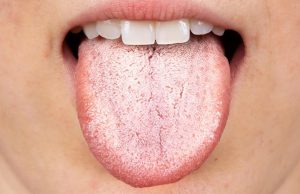
Noticing a crusty bump on your elbow can be unsettling and irritating. Whether it causes pain or simply looks unpleasant, you might feel tempted to remove it yourself. However, before attempting any treatment at home, it’s crucial to understand what this bump could be and whether self-treatment is safe.
This article delves into the possible causes of such a bump, how to recognize if it’s a wart, when home remedies might be appropriate, and when professional medical advice is necessary. Additionally, we’ll cover treatment options and precautions to keep in mind.
Recognizing the Bump: Could It Be a Wart?
Warts are common skin growths caused by the human papillomavirus (HPV). They often appear on fingers or hands, but can also develop on elbows. Typically, warts are small, rough bumps that range from about 1 millimeter to 1 centimeter in size. They sometimes have tiny black dots, which are clotted blood vessels visible on the surface.
To identify if your elbow bump is a wart, pay attention to its texture, size, and appearance. However, it’s important to note that other skin conditions like eczema or psoriasis may cause similar-looking bumps. Therefore, distinguishing a wart from other skin issues is vital for proper treatment.
Other Possible Causes for an Elbow Bump

Besides warts, several conditions might cause bumps on the elbow. Bursitis, an inflammation of the bursa (a fluid-filled sac cushioning joints), can cause swelling and discomfort. Cysts—closed sacs containing fluid or other material—may also form lumps.
Dermatological issues like eczema or psoriasis often produce red, flaky, or crusty patches, sometimes mistaken for bumps. Occasionally, benign tumors such as lipomas (fatty growths beneath the skin) can appear as lumps.
Considering Home Treatments
If the bump is small, relatively painless, and you suspect it’s a wart, you might consider home remedies. Over-the-counter products containing salicylic acid are common treatments that gradually peel off the wart. Another popular method is the duct tape technique, where covering the wart may help remove layers of skin.
Keep in mind, home treatments can take several weeks or months to show results and don’t guarantee success. Always monitor the bump for any worsening or irritation while using these methods.
Viral Home Hacks for Wart Removal

Social media has popularized several home “hacks” for wart removal, such as applying apple cider vinegar, banana peels, or garlic. Apple cider vinegar’s acidic properties are thought to dissolve warts slowly.
However, scientific evidence supporting these remedies is limited. If you try them, be cautious about possible skin irritation or allergic reactions.
Risks of Removing Warts Yourself
Removing a wart without professional guidance carries risks such as infection, scarring, or spreading the virus to other areas or people. Using sharp objects or incorrect methods can cause cuts or wounds, increasing infection chances.
Moreover, misidentifying the bump might lead to the wrong treatment and potential complications. When in doubt about the bump’s nature, seeking medical advice is safest.
When to Consult a Doctor
It’s important to see a healthcare provider if the bump becomes painful, grows quickly, changes color or shape, or bleeds. These could indicate a more serious issue, including skin cancer.
Other reasons to seek help include signs of infection (redness, swelling, pus), failure of home treatments, or if you have a weakened immune system, which affects your ability to heal.
Preventing Future Bumps
Good hygiene, such as washing hands regularly and avoiding contact with warts, helps prevent new outbreaks. Keeping skin moisturized prevents cracks that allow virus entry. Avoid sharing personal items like towels or razors.
Using protective gear like elbow pads during activities that stress the joints and maintaining a strong immune system through balanced nutrition and exercise can also reduce risk.
Common Myths About Wart Removal

Many myths surround warts—for example, cutting them off permanently removes them, which is false and can cause harm. Warts don’t have roots; they grow in the skin’s outer layer. Magical thinking won’t cure warts, so rely on scientifically proven methods.
Seeking a Second Opinion
If you’re uncertain about a diagnosis or treatment plan, don’t hesitate to get a second opinion. Another healthcare provider might offer alternative options or reassurance, which is important for your peace of mind and effective care.
Understanding the nature of an elbow bump and approaching treatment carefully can prevent complications and help you manage the condition safely and effectively.
















